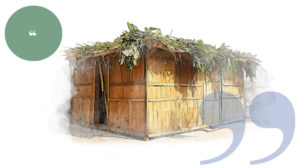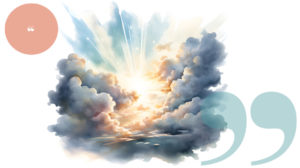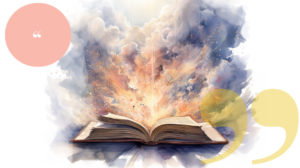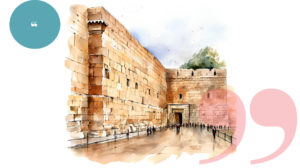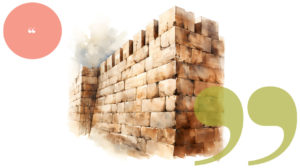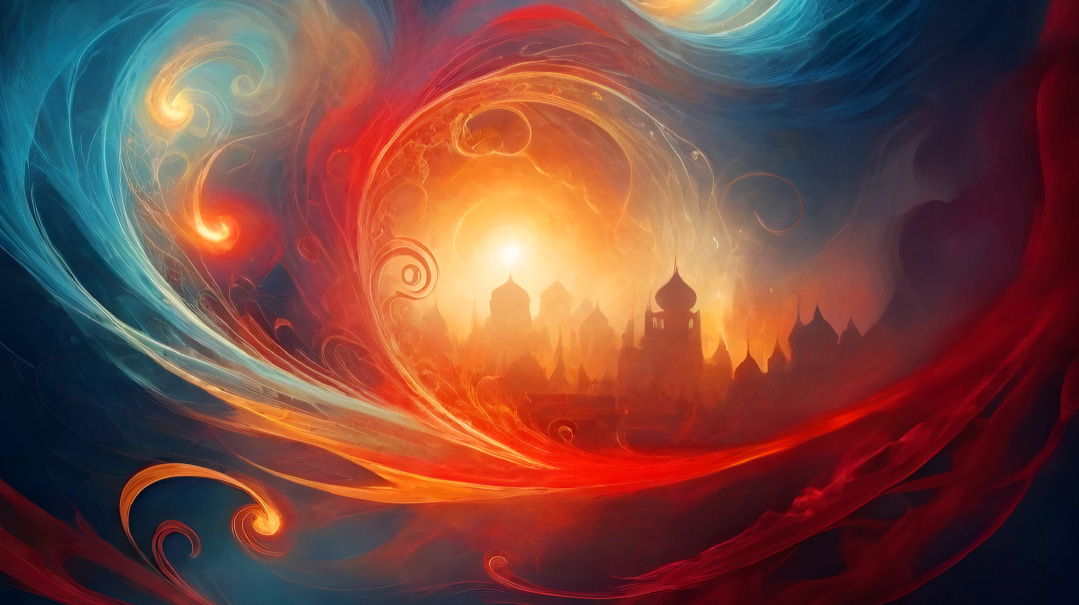Echoes of a Dream
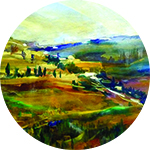
Do you dream? Do you long for a country halfway across the world?
“Yerushalayim I dream of you!” These words penned by Mrs. Dina Storch echo the yearning that fills my heart each day. “When I close my eyes I can see a beautiful sky a blossoming tree … Yerushalayim my heart is with you!”
When meeting a stranger the standard conversation opener is: “Where do you live?” My response is nonstandard. “I have a house in Far Rockaway but I live in Yerushalayim.” Rabbi Yehuda HaLevi taught us all “Libi b’mizrach — my heart is in the east and I am in the west.” It is so hard to live without your heart. I have a constant debate with people if my response is too unconventional. Perhaps people think it’s weird. Yet I feel it’s my reality.
The Torah tells us “The land to where you are coming is not like Egypt… it’s the land that Hashem seeks; the eyes of Hashem are always upon her from the beginning to the end of the year” (Devarim 11:10-12). Rashi asks “Doesn’t Hashem seek His whole world?” He answers “No just Eretz Yisrael!”
Through Hashem’s “seeking” and giving sustenance to Eretz Yisrael He sustains the whole world. Eretz Yisrael is the core upon which the universe rests and it’s in this land I’ve left my heart.
Shortly after I moved from Eretz Yisrael to America I attended a meeting with several other rebbetzins in Lawrence New York in Rabbi Dovid Weinberger shlita’s shul. We met to strategize how to combat the tzniyus epidemic that continues to plague our community.
It was a blustery winter night in December and in the midst of our discussion I happened to look out the window — and burst into tears. For a moment my eyes played tricks on me. Within the flickering lights shining in the darkness outside the pane I suddenly envisioned the shining glory of the Yerushalayim hills lights winking among its peaks and valleys. The nocturnal view from my former fifth-floor window in Sanhedria Hamurchevet was one that shook me in its splendor every night. The tears began when I snapped back toLawrence New York and realized that my mirage was merely the neighbor’s display as he lit up the night with his seasonal exhibition.
Do you dream? Do you long for a country halfway across the world? One may ask: Why should you? It’s all so far away. Yet that question is the antithesis of reality. Why don’t you dream? is the question.
Loneliness amidst Plenty
The Three Weeks seem to be showing up a bit early this year and many of us are greeting them like an imposing guest who does not “fit in” with our itinerary.
“Eichah yashvah badad — How can she sit alone?” Yermiyahu cries. But our busy schedules of simchahs errands trips exercise and appointments certainly do not present any semblance to loneliness.
Several months ago when Sandywreaked havoc in our lives our community was struck with a blow that highlights the transience of galus. However for the majority of us Sandy is but a memory. Construction around our community continues with a vengeance and the appearance of many luxury “castles” ironically reflects this mood of rebuilding.
Even those of us still living in our more simple homes obviously relish the convenience of life in the “goldene medina.” The amount of shopping done by people visiting fromIsrael only furthers the presumption that althoughIsrael is the land of “milk and honey” people are enticed by the land of “silk and money.”
Furthermore the longer we sojourn in this ephemeral world of galus the longer its web of permanence is cast around us. Rav Aharon Kotler discusses the pasuk in Va’eshachan where Bnei Yisrael are chastised “You saw their disgusting gods trees rocks silver gold …” describing how quickly we adapted to galus in Mitzrayim and became desensitized from its innately false value systems. At first their practices were disgusting yet as time went on we viewed their gods as harmless inanimate trees or rocks. And two or three generations into galus (as was clearly illustrated in the Purim story) what had been formerly repugnant was now resplendent silver and gold!
Rabbi Shimshon Pincus explains the danger of the reality the Gemara describes (Sotah 43) “Chen makom al yoshveha — A place has a charm on its inhabitants.” The threat of this charm is losing that “lonely” galus feeling. In its place comes a pride in the land and culture that we share with our galus neighbors. Home sweet home in good ol’America.
Interestingly Rav Yaakov Weinberg ztz”l postulated that even our growth on the spiritual front in this country is an impediment to our yearning for Geulah. As we watch the explosion of shuls schools and batei medrash we are filled with pride in the growth and rebuilding that characterizes our generation. In contrast to the concept of the Torah being originally given in the midbar we find Yiddishkeit thriving all over the world. Chazal’s three reasons to justify living outside of Eretz Yisrael: Torah parnassah and shidduchim seem to validate our happy lives in chutz l’Aretz and galus.
The Place I Call Home
Yet we are admonished: “Im lo aaleh es Yerushalyim al rosh simchasi!” We must think about the destruction of our holy city even at the heights of our joy. How can we be so comfortable when a mosque sits on our holiest site? While we can be serious ovdei Hashem both in chutz l’Aretz and Eretz Yisrael we cannot be complacent.
In Shemoneh Esrei before we bow in thanks and say Modim we plead that we merit to see the Shechinah’s presence in Yerushalyim. We cannot be fully thankful when we serve Hashem with such disadvantages. Disadvantages such as no Mikdash no Kohein Gadol no ketores no Aron Ha’Eidus — no Shechinah.
Yes the Shechinah is alive and well but we can’t see it shining through the windows of our Beis HaMikdash. And this lack is felt all that more keenly in Eretz Yisrael. Even though we are still in galus in our present-day Eretz Yisrael or perhaps because we are in galus in Eretz Yisrael the awareness of what we are missing is concretized within the Land. When a Jew sitting in Yerushalayim recites the words “Next year in a rebuilt Yerushalayim ” he is ever so cognizant that while he may be standing in the physical Yeruslayim the spiritual Yerushalayim still lies in ruins.
As Yeshayahu HaNavi stated “For the sake of ZionI will not be silent for the sake of Yerushalyim I will not keep quiet “(Yeshayahu 62:1) The meforshim explain this pasuk as an affirmation of a person’s commitment to an emes that he will not forsake. An everlasting desire to see Yerushalayim rebuilt and the ultimate Jewish dream fulfilled.
Standing at the Kosel HaMaaravi offers a sense of affirmation that we did and will once again have a Beis HaMikdash. It is a tangible connection to the Shechinah that rests above that wall of tears. Throughout the Land there is a sense of the history of Klal Yisrael and of the happy ending that we’re awaiting.
Every Jewish heart that yearns for the Yerushalyim of today is a heart that yearns for the Shechinah and the Yerushalayim of the future. Rav Shimon Shwab comments that in bircas hamazon we conclude the brachah of Yerushalayim with the present tense “Boneh b’rachamav Yerushalyim” — the builder of Yerushalayim. It is not the future builder — Yivneh — but the current builder — Boneh. Every yearning heart is currently building Yerushalyim. Galus is a great deep dark underground pit — but it’s the foundation upon which the future Yerushalyim will rest. For every moment yearning for the Shechinah we are laying the bedrock of the faith of a people who will never be silent in their longing for Yerushalayim.
The midrash teaches us that the Aron of the Beis HaMikdash was hidden in the deep tunnels under the Mikdash prepared by Shlomo HaMelech. It has not and will not be found until the Building that housed it is resurrected. Rav Yizchak Hutner suggests that this Aron represents the “Lev Yehudi” the heart of every Jew. This heart is the heart that pines for the Shechinah the Beis Hamikash and a rebuilt Yerushalayim. The beating of that heart may be hidden and buried but can never be silenced.
(Originally featured in Family First, Issue 347)
Oops! We could not locate your form.

